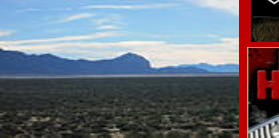
SPONSORS
BECOME A
SPONSOR
We have 4 different
levels of sponsorship
that are available.We
believe that this site
will generate traffic
leads for your business
and since we are just
starting we have some
great rate plans.
Contact Rocko’ for
further information.
SWDeserts / Desert Magazine SW / My DesertMagazine LLC All Rights Reserved © 1937-2022




SONORAN DESERT

The Sonoran Desert is a North American desert which covers large parts of the Southwestern United
States in Arizona and California, and of Northwestern Mexico in Sonora, Baja California and Baja California
Sur. It is the hottest desert in North America, with an area of 280,000 square kilometers (110,000 sq mi).
The western portion of the United States–Mexico border passes through the Sonoran Desert.
In phytogeography, the Sonoran Desert is within the Sonoran Floristic Province of the Madrean Region in
southwestern North America, part of the Holarctic Kingdom of the northern Western Hemisphere. The
desert contains a variety of unique and endemic plants and animals, such as the Saguaro (Carnegiea
gigantea) and Organ Pipe cactus (Stenocereus thurberi).
Location
The Sonoran desert wraps around the northern end of the Gulf of California, from Baja California Sur (El
Vizcaíno Biosphere Reserve in central and Pacific west coast, Central Gulf Coast subregion on east to
southern tip), north through much of Baja California, excluding the central northwest mountains and Pacific
west coast, through southeastern California and southwestern and southern Arizona to western and central
parts of Sonora.
It is bounded on the west by the Peninsular Ranges, which separate it from the California chaparral and
woodlands (northwest) and Baja California desert (Vizcaino subregion, central and southeast) ecoregions
of the Pacific slope. To the north in California and northwest Arizona, the Sonoran Desert transitions to the
colder-winter, higher-elevation Mojave, Great Basin, and Colorado Plateau deserts.
To the east and southeast, the deserts transition to the coniferous Arizona Mountains forests and Sierra
Madre and Sierra Madre Occidental pine–oak forests at higher elevations. To the south the
Sonoran–Sinaloan transition subtropical dry forest is the transition zone from the Sonoran Desert to the
tropical dry forests of the state of Sinaloa.
Ecology
The Sonoran Desert includes 60 mammal species, 350 bird species, 20 amphibian species, over 100
reptile species, 30 native fish species, over 1000 native bee species, and more than 2,000 native plant
species. The Sonoran Desert area southwest of Tucson and near the Mexican border is vital habitat for the
only population of Jaguars living within the United States.
The Colorado River Delta was once an ecological
hotspot within the Sonoran desert, fueled by the flow of fresh water through the Colorado river in this
otherwise dry area, but the delta has been greatly reduced in extent due to the damming and use of the
river upstream.
Flora
Many plants not only survive, but thrive in the harsh conditions of the Sonoran Desert. Many have evolved
to have specialized adaptations to the desert climate. The Sonoran Desert's biseasonal rainfall pattern
results in more plant species than in the other North America deserts. The Sonoran Desert includes plant
genera and species from the agave family, palm family, cactus family, legume family, and numerous others.
The Sonoran is the only place in the world where the famous saguaro cactus (Carnegiea gigantea) grows in
the wild.
Cholla (Cylindropuntia spp.), beavertail (Opuntia basilaris), hedgehog (Echinocereus spp.),
fishhook (Ferocactus wislizeni), prickly pear (Opuntia spp.), nightblooming cereus (Peniocereus spp.), and
organ pipe (Stenocereus thurberi) are other taxa of cacti found here. Cactus provides food and homes to
many desert mammals and birds, with showy flowers in reds, pinks, yellows, and whites, blooming most
commonly from late March through June, depending on the species and seasonal temperatures.
Creosote bush (Larrea tridentata) and bur sage (Ambrosia dumosa) dominate valley floors. Indigo bush
(Psorothamnus fremontii) and Mormon tea are other shrubs that may be found. Wildflowers of the Sonoran
Desert include desert sand verbena (Abronia villosa), desert sunflower (Geraea canescens), and evening
primroses.
Ascending from the valley up bajadas, various subtrees such as velvet mesquite (Prosopis velutina), palo
verde (Parkinsonia florida), desert ironwood (Olneya tesota), desert willow (Chilopsis linearis ssp. arcuata),
and crucifixion thorn (Canotia holacantha) are common, as well as multi-stemmed ocotillo (Fouquieria
splendens). Shrubs found at higher elevations include whitethorn acacia (Acacia constricta), fairy duster,
and jojoba. In the desert subdivisions found on Baja California, cardon cactus, elephant tree, and boojum
tree occur.
The California fan palm (Washingtonia filifera) is found in the Colorado Desert section of the Sonoran
Desert, the only native palm in California, among many other introduced Arecaceae genera and species. It
is found at spring-fed oases, such as in Anza Borrego Desert State Park, Joshua Tree National Park, and
the Kofa National Wildlife Refuge.
Text is available under the Creative Commons Attribution-ShareAlike License; additional terms may apply.Wikipedia® is a registered trademark
of the Wikimedia Foundation, Inc., a non-profit organization.





Desert Adventures & Exploring....Since 1937


OF THE SOUTHWEST



















